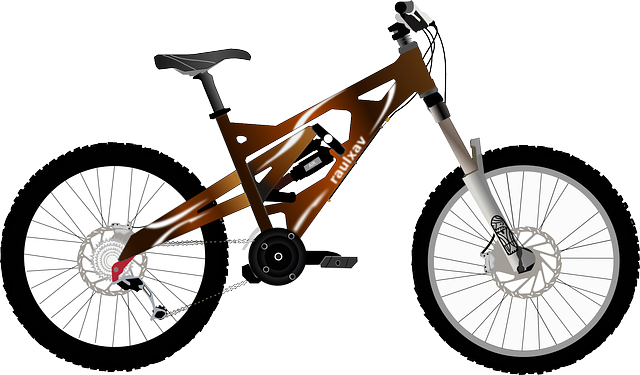Hey there! Have you ever wondered whether a portable tire compressor can potentially damage your tires? Well, you’re in luck because we’ve got all the answers for you! In this article, we’ll be diving into the topic of whether using a portable tire compressor can have any negative effects on the condition of your tires. We understand the importance of taking care of your vehicle, so we’ve done the research to provide you with all the information you need to make an informed decision. So, sit back, relax, and let’s explore this together!
Curious to know more? Well, you’ve come to the right place! In the second part of our article, we’ll be discussing the different factors to consider when using a portable tire compressor and how they could potentially impact your tires. From the air pressure levels to the duration of use, we’ll cover it all. We’ll also share some tips and best practices to ensure that you’re using a portable tire compressor in the safest and most effective way possible. So, if you’re interested in learning about whether a portable tire compressor can damage your tires or not, keep reading and discover everything you need to know!

Introduction
Definition of a portable tire compressor
A portable tire compressor is a compact and lightweight device that is designed to inflate tires when needed. It is a convenient tool to have, especially during emergencies or when traveling long distances. These compressors are powered by either electricity or the engine’s power source, and they provide a quick and easy way to inflate tires to the recommended pressure levels.
Importance of maintaining tire pressure
Maintaining the correct tire pressure is crucial for several reasons. Firstly, properly inflated tires improve fuel efficiency, as they reduce rolling resistance. Secondly, they enhance traction and handling, ensuring a safer driving experience. Thirdly, maintaining the correct tire pressure extends the lifespan of tires, leading to cost savings in the long run. Therefore, it is essential to regularly check and maintain tire pressure, and a portable tire compressor can be a valuable tool for this purpose.
Understanding Tire Damage
Factors that can cause tire damage
Tire damage can occur due to various factors, such as road hazards, improper maintenance, and excessive wear. Road hazards include potholes, sharp objects, and debris that can puncture or damage the tire. Improper maintenance, such as inadequate tire pressure or incorrect tire alignment, can lead to accelerated tire wear and potential damage. Additionally, excessive wear from driving on underinflated tires or using worn-out tires can also cause tire damage.
Consequences of inadequate tire maintenance
Inadequate tire maintenance can have serious consequences. One of the most common issues is a loss of tire grip, which can lead to reduced control and increased braking distances. Furthermore, underinflated tires are prone to overheating, which can cause tire blowouts. Excessive wear due to lack of maintenance can also compromise the tire’s structural integrity, making it more susceptible to punctures and failure. All of these consequences can pose significant risks to your safety and the overall performance of your vehicle.

Mechanism of Portable Tire Compressors
Working principles of portable tire compressors
Portable tire compressors work on the principle of compressing air and forcing it into the tire to increase the air pressure. The compressors draw in ambient air through an intake valve and then compress it using a motor or engine-powered piston. The compressed air is then directed through a hose and into the tire through a nozzle or valve connection. The inflow of compressed air gradually increases the tire pressure to the desired level.
Components of a portable tire compressor
A portable tire compressor typically consists of several key components. These include the motor or engine powering the compressor, the air intake valve, the piston or pump mechanism, the air storage tank (if applicable), the pressure gauge, the hose, and the nozzle or valve connection. These components work together to create compressed air and deliver it to the tire.
Effects of Portable Tire Compressors on Tires
Potential risks of using a portable tire compressor
While portable tire compressors are generally safe to use, there are some potential risks associated with their usage. One risk is overinflation, which can occur if the compressor is not monitored closely or if the pressure gauge is inaccurate. Overinflated tires can lead to uneven tread wear and reduced traction, which can impact the vehicle’s handling and safety. Another risk is using a compressor that does not regulate the air pressure properly, leading to inconsistent tire pressure levels.
Types of damage that can occur
Using a portable tire compressor incorrectly or inappropriately can cause various types of damage to the tire. Overinflation, as mentioned earlier, can put excessive pressure on the tire, leading to increased wear and a higher risk of blowouts. On the other hand, underinflation, which can be caused by a faulty compressor or inaccurate pressure gauge, can result in uneven tread wear, reduced fuel efficiency, and decreased traction. Both overinflation and underinflation can compromise the tire’s structural integrity and overall performance.

Preventing Tire Damage
Proper usage of portable tire compressors
To prevent tire damage when using a portable tire compressor, it is important to follow a few guidelines. Firstly, always consult the vehicle manufacturer’s recommended tire pressure guidelines and ensure you inflate the tires to the specified pressure levels. Secondly, check the compressor’s pressure gauge for accuracy and regularly calibrate or replace it if necessary. Additionally, monitor the tire pressure during the inflation process to avoid overinflation or underinflation. Lastly, avoid using a compressor that does not have proper pressure regulation features to ensure consistent tire pressure.
Recommended tire pressure levels
The recommended tire pressure levels can typically be found in the vehicle owner’s manual or on a sticker located on the driver’s side door jamb. It is crucial to follow these guidelines to ensure optimal tire performance and safety. The recommended tire pressure may vary depending on factors such as the vehicle’s weight, load capacity, and tire size. As a general rule, it is important to check the tire pressure regularly, especially before long trips or when carrying heavy loads.
Using Portable Tire Compressors Safely
Best practices for operating a portable tire compressor
To use a portable tire compressor safely, follow these best practices. Firstly, ensure that the compressor is placed on a stable surface to prevent it from toppling over during operation. Secondly, read and understand the instruction manual provided with the compressor to familiarize yourself with its features and limitations. Additionally, wear appropriate protective gear, such as goggles and gloves, to protect yourself from any potential hazards. Lastly, never leave the compressor unattended during operation and avoid pointing the air nozzle or valve connection directly at yourself or others.
Avoiding common mistakes
There are a few common mistakes to avoid when using a portable tire compressor. Firstly, do not overinflate the tires, as this can lead to increased wear and potential blowouts. Secondly, do not rely solely on the compressor’s pressure gauge; it is recommended to use a separate, accurate gauge to verify the tire pressure. Additionally, do not use a compressor that is damaged, leaking, or malfunctioning, as this can compromise the safety and effectiveness of the inflation process. Lastly, do not rush the inflation process; take your time to ensure the tires are inflated properly.
Signs of Tire Damage
Identifying visible signs of tire damage
It is important to regularly inspect your tires for visible signs of damage. These signs may include cuts, bulges, cracks, or punctures on the tire’s surface. Cuts or punctures can be caused by road hazards or sharp objects, and they can result in tire failure if not addressed promptly. Bulges or cracks may indicate internal damage or weakened tire structure. If you notice any of these visible signs of damage, it is essential to take immediate action to prevent further complications.
Indicators of internal tire damage
Internal tire damage is not always visible, but there are several indicators that can help identify potential issues. One indicator is abnormal tire wear patterns, such as uneven tread wear or excessive wear on certain areas of the tire. These patterns can suggest improper inflation, misalignment, or other issues that can lead to internal damage. Additionally, if you experience unusual vibrations or handling issues while driving, it could be a sign of internal tire damage. In such cases, it is advisable to have the tires inspected by a professional.
Repairing Tire Damage
Steps to take when tire damage occurs
When tire damage occurs, it is important to take immediate action to prevent further complications. Firstly, safely pull over to a secure location away from traffic. Then, assess the extent of the damage by inspecting the tire for cuts, punctures, or other visible signs of damage. If the damage is minor and limited to the tread area, it may be possible to repair the tire. However, if the damage is extensive or near the sidewall, it is usually recommended to replace the tire.
Professional assistance for tire repairs
For tire repairs, it is advisable to seek professional assistance from a certified tire technician or a reputable tire repair shop. They have the expertise and specialized equipment to accurately assess the damage and determine if repair is possible. Tire repairs should always be carried out following industry standards and guidelines to ensure safety and effectiveness. Attempting to repair a tire without the necessary knowledge and equipment can lead to further damage or compromise the tire’s integrity.
Replacing Damaged Tires
When to consider tire replacement
There are several instances when it is advisable to consider tire replacement instead of repair. Firstly, if the tire has significant sidewall damage, such as cuts or bulges, it is usually not repairable. Secondly, if the tire has been driven on while severely underinflated or worn out, it may be structurally compromised and should be replaced. Additionally, if the tire has reached its legal tread wear limit or if it is more than six years old, it is recommended to replace the tire for safety reasons.
Choosing the right replacement tires
When choosing replacement tires, several factors should be taken into account. Firstly, consider the vehicle manufacturer’s recommendations regarding tire size, load capacity, and speed rating. These specifications are crucial to maintaining the vehicle’s performance and safety. Secondly, consider the driving conditions and the desired tire performance characteristics, such as fuel efficiency, wet traction, or off-road capabilities. Lastly, consult with a tire professional, who can provide expert advice based on your specific needs and budget.
Conclusion
Summary of the effects of portable tire compressors on tires
In conclusion, portable tire compressors can be a valuable tool for maintaining proper tire pressure, which is crucial for safety, fuel efficiency, and tire longevity. However, it is important to use them correctly to prevent potential tire damage. Overinflation and underinflation are the primary risks associated with using a portable tire compressor, as they can lead to uneven wear, reduced traction, and increased risk of blowouts. By following best practices, regularly inspecting tires for damage, and addressing any issues promptly, you can ensure the safe and effective operation of your portable tire compressor.
Importance of regular tire maintenance
Regular tire maintenance, including proper inflation and routine inspections, is essential for vehicle safety, performance, and cost savings. Using a portable tire compressor as part of your tire maintenance routine can help you easily maintain the correct tire pressure, ensuring optimal tire performance and longevity. Remember to always consult the vehicle manufacturer’s guidelines, use accurate pressure gauges, and seek professional assistance when necessary. By taking care of your tires, you can enjoy a smoother and safer driving experience while minimizing the risk of tire damage.
